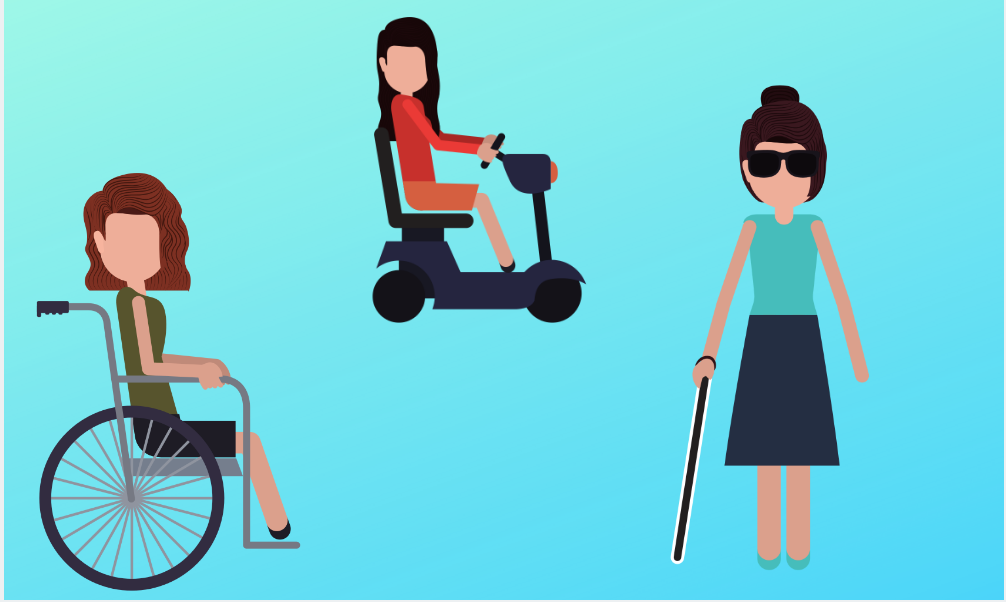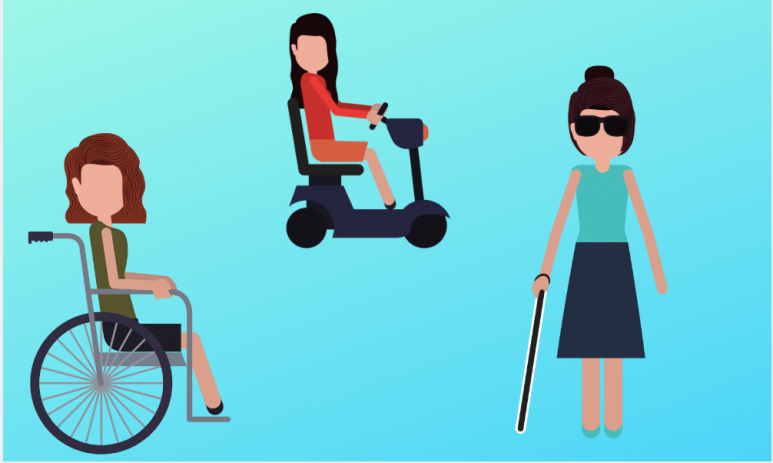11 March 2019
Country: Global
by Ace Tilton Ratcliff

 Exactly this time last year, Apple unveiled plans for thirteen new emoji, each one specifically designed to “foster a diverse culture that is inclusive of disability.” Now, the proposed icons–which includes a service dog, manual and mechanical wheelchair users and prosthetic arms and legs–are getting ready to be rolled out as part of Emoji 12.0, the 230 new emoji proposed for 2019.
Exactly this time last year, Apple unveiled plans for thirteen new emoji, each one specifically designed to “foster a diverse culture that is inclusive of disability.” Now, the proposed icons–which includes a service dog, manual and mechanical wheelchair users and prosthetic arms and legs–are getting ready to be rolled out as part of Emoji 12.0, the 230 new emoji proposed for 2019.
It is a huge relief; prior to this release, there was only one emoji represented disability: the wheelchair symbol ♿. Given the fact that there are an estimated one billion people experience some form of disability (an estimated 15 percent of the global population), this is painfully unrepresentative. Adding insult to injury, disability encompasses a broad spectrum of experience, which includes far more experiences than just us wheelchair users. Anyone who falls into this category hasn’t been represented at all.While emoji might have started as a gimmick, they have become an important aspect of how we communicate an express ourselves online. An estimated 74 percent of Americans use emoji every day; 5 billion emoji are sent daily on Facebook Messenger; and by mid-2015, half of all Instagram comments included an emoji. People use the hell out of emoji, and increasingly, we’re wanting those itty-bitty images to represent the actual us on the other side of the screen. Clearly, the Unicode Consortium–the official entity that approves proposed emoji—understands: in 2015, they added skin tone modifiers, a slew of LGBT emoji (like same-sex couples holding hands and as part of a family group), and more inclusive houses of worship, like a mosque and a synagogue. Even astronauts were added in 2016, despite the fact that fewer than 700 humans have ever been to space (the exact number varies, depending on what you count as the exact boundary between us and space—and yes, I get that Scott Kelly is really cool.)
In fact, when it comes to emoji representation, even fantastical creatures that don’t actually exist in real life have better emoji representation than we do. Merpeople, vampires, mages, fairies, elves, zombies, superheroes, and supervillains make up 18 individual emoji options, if you count male and female versions individually (and even more if you count skin tone modifiers). They’ve also been around for years, with most being introduced in either 2016 or 2017.
So what’s the damn excuse for why it’s taken so long for disabled people to get emoji representation?
Yes, the disability community has every single right to be thrilled that as of this year, there will be new emoji representing some of our lived experiences. Finally. But we also have every right to be enraged that it’s taken so long for this meager offering of trivial options to finally show up. We should be fuming that Emoji 12.0 has more colored circles and squares in its release than it does actual representations of disability. We should be incensed that even though we make up one-fifth of the population, we get less representation than creatures that do not currently and will never actually exist. Our emoji keyboards are just as inaccessible as the world around us–which should fill us with white hot fury, but I think we’re just exhausted and not at all surprised.
Sure, it is fabulous that Apple worked with some of the leading disability organisations around the US to ensure that disability was properly represented in their proposed emojis, but how many of the employees drafting the proposal or sketching the emojis were actually disabled? My guess is, not many. Studies show that disabled people are significantly less likely to be employed than their non-disabled counterparts. In the United States and the UK, disabled people are twice as likely to be unemployed than non-disabled people, and we have to apply for 60% more jobs than non-disabled people before we’re hired. Since Apple doesn’t include disability in its public diversity reporting, there are probably few–if any–disabled people working in its ranks.
Our significantly increased unemployment rate surely occurs for a myriad of reasons, but it can’t be overstated that inaccessibility to the rest of the world is deeply impactful. Our academic efforts are hampered by a physical inability to get on campuses across the country, and in many ways are impacted long before we pursue higher education. While data about accessibility in US high schools, middle schools, and elementary schools isn’t formalized, but a two-year investigation released in 2015 by the U.S. Department of Justice found that 83% of New York City’s public elementary schools are inaccessible. A 2017 report from the Department for Education found that the quality of education is significantly decreased for disabled students: only 14% reached the expected level for reading, writing, and maths (contrastingly, 62% of nondisabled children achieve those levels.) Unsurprisingly, in the UK, the number of disabled kids being homeschooled has jumped 57% over the last five years, while 1,000 disabled kids are waitlisted for access.
Even if an accessible school existed, you can’t get there: only 24% of New York City’s 472 subway stations are accessible via an elevator, and half of the city’s subway-served neighborhoods lack a single accessible station. In London, only 25% of London Tube stations are accessible. Both cities are the most populous in their respective countries, and are global powers that exerts a significant impact on culture, finances, and the media. If these major cities have failed to make accessibility a priority, what about a tiny town in the Midwest or Western Midlands?
Unfortunately, inaccessibility isn’t just an issue in work and schools. 75% of US polling places are inaccessible, which means we can’t get in to vote. Eating out, movie theaters, concerts, air travel, hotel rooms—all the staples of a so-called normal, everyday life are all plagued by inaccessibility, which prevents disabled people from physically existing in public the same way our nondisabled cohorts do. Believe it or not, 25% of disabled adults in the UK have never used the Internet due to complications of expense and inaccessibility, because 70% of websites in the UK are inaccessible. Likewise, website-accessibility lawsuits rose by 30 percent in the US between the years of 2016 and 2017, showing that this is a worldwide problem.
If you can name an experience you’ve enjoyed as a nondisabled person, I’ve probably had a nightmare of a time trying to do the same thing in my wheelchair. Disabled people are forcibly, physically excluded from so many aspects of work and play that it feels more likely to see a mermaid or vampire in real life than a wheelchair-using professional heading to work at a tech company to propose an emoji that represents us.
So really, is it a surprise that it’s taken this many years for a semblance of disability representation to show up in our emoji? Not particularly. We deserve more, and not just on our emoji keyboard.
To learn more about MDI’s ongoing work promoting positive news coverage of disability in Macedonian media, click here.

